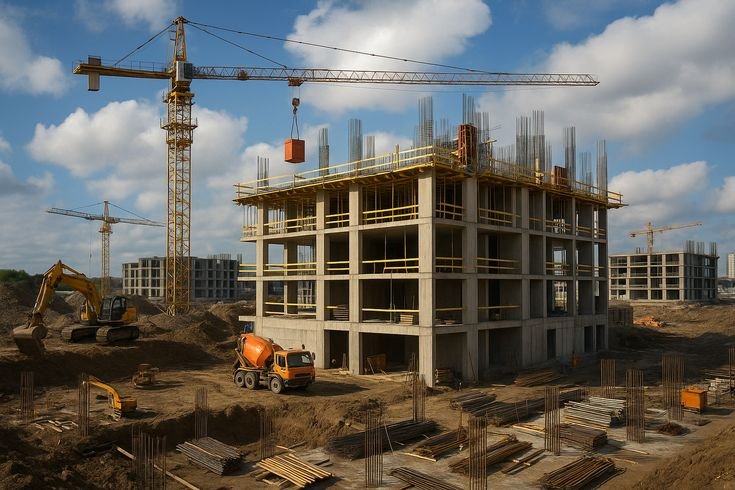Table of Contents
Introduction
Redevelopment is more than just real estate jargon—it’s a powerful tool to reshape cities, modernize infrastructure, and unlock hidden value in ageing properties. In densely packed cities like Mumbai, redevelopment isn’t an option—it’s a necessity. But what does it really mean? Who benefits? And how does the process work?
Let’s break it down.
What is Redevelopment?
Redevelopment in real estate refers to the process of tearing down, rebuilding, or significantly renovating existing properties to increase their value, safety, functionality, and aesthetic appeal. It can apply to individual buildings, housing societies, commercial zones, or even entire neighborhoods.
This transformation helps:
Improve living conditions
Upgrade outdated infrastructure
Generate economic returns for all stakeholders involved
It’s the real estate equivalent of pressing reset—only smarter, safer, and future-ready.
Types of Redevelopment
1. Demolition and Reconstruction
This involves completely tearing down the existing building and constructing a new structure from scratch. It is the most common type of redevelopment, especially in Mumbai’s older housing societies. Example: Replacing a 30-year-old building with a modern 15-storey tower with lifts, parking, and amenities.
2. Major Renovation or Upgradation
In this case, the building structure remains intact, but significant interior and exterior improvements are made—such as plumbing, electric wiring, flooring, and painting. Example: Renovating an old office complex to include energy-efficient lighting, modern restrooms, and a redesigned lobby.
3. Repurposing or Adaptive Reuse
This refers to converting a building from its original use to a new one. It doesn’t involve demolition but reimagining the purpose of the existing space. Example: Converting an old factory into a co-working space or an art gallery.
4. Urban Renewal or Cluster Redevelopment
This is a large-scale redevelopment strategy where entire neighborhoods or groups of buildings are redeveloped together, often with government support. It aims to improve infrastructure, connectivity, and overall quality of life. Example: The Dharavi Redevelopment Project or BDD Chawl redevelopment in Mumbai.

Why Redevelopment is needed in Mumbai?
Redevelopment is more than just real estate jargon—it’s a powerful tool to reshape cities, modernize infrastructure, and unlock hidden value in ageing properties. In densely packed cities like Mumbai, redevelopment isn’t an option—it’s a necessity. But what does it really mean? Who benefits? And how does the process work?
Let’s break it down.
Redevelopment Process - Step by Step
Benefits of Redevelopment
Here’s a simplified timeline for a housing society redevelopment:
Consent of 70% members (as per RERA/Municipal law)
Technical Feasibility Report
Tender & Developer Selection
Development Agreement
Sanctions & Approvals
Relocation with Rent/Transit Rent
Demolition
Construction Begins
Completion + Handover of New Flats
Registration of New Property Documents
At Misty, we handle every step transparently, from legal paperwork to project delivery.
For Society Members:
Brand-new flats without cost
More space (extra FSI = more carpet area)
Modern amenities: lifts, parking, security
Higher property value
Safer, stronger structures
For Builders:
Business from existing city zones
Better land use = higher ROI
Reputation from successful delivery
For the City:
Decongestion of crumbling buildings
Planned growth instead of random expansion
Safer, greener, smarter city life
Challenges in Redevelopment
Cost Overruns – Unforeseen demolition, legal or material costs.
Delays – Due to permissions, weather, or coordination issues.
Resident Displacement – Managing rent, relocation, and trust.
Legal Hurdles – Complex approvals, DCR rules, environmental NOCs.
Developer Trust – Some projects get stuck due to fly-by-night builders.
Legal & Regulatory Aspects
RERA Act – Regulates and protects buyers during redevelopment.
Co-operative Society Act – Sets rules for society member voting and consent.
DCPR 2034 (Mumbai) – Governs FSI, incentives, and cluster schemes.
IBC – Used when stalled projects require resolution.
Misty ensures full legal compliance through verified legal experts and structural auditors.
How Misty Land Developers does it Differently?
Ethical redevelopment – no hidden terms
Transparent paperwork and timelines
Project videos, regular construction updates
Customer-first approach, always
Track record of timely delivery and quality construction
Strong relationships with architects, legal advisors, and society members
Conclusion
Redevelopment isn’t just a construction process—it’s an opportunity. An opportunity to rebuild Mumbai, reimagine homes, uplift lives, and future-proof the way our cities live and grow.
When done right, redevelopment turns a crumbling wall into a cityscape of dreams.
And Misty Land Developers is proud to lead that change, ethically and expertly.
FAQs?
Q1. Is redevelopment safe for society members?
Yes, if done with proper agreements, reputed builders, and legal documentation.
Q2. Will I get a bigger flat after redevelopment?
In most cases, yes. Depending on FSI and agreement, members often get extra carpet area.
Q3. How long does redevelopment take?
Typically 2.5 to 3.5 years from agreement to handover.
Q4. Do we have to vacate during the process?
Yes. Builders usually provide rent or alternate accommodation for that period.
Q5. Can redevelopment be done on commercial property?
Absolutely. Offices, malls, mixed-use buildings, etc. are all eligible for redevelopment.
